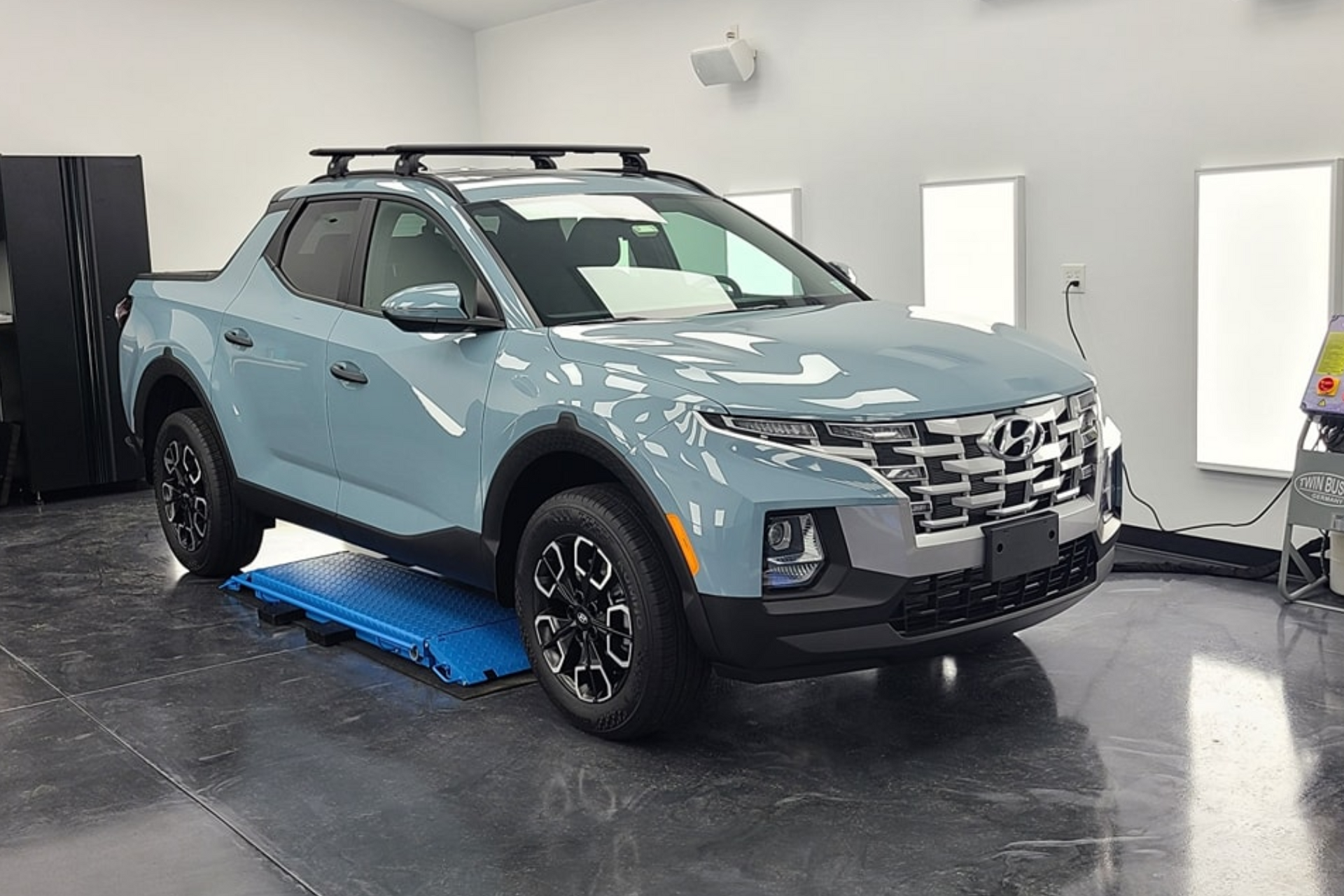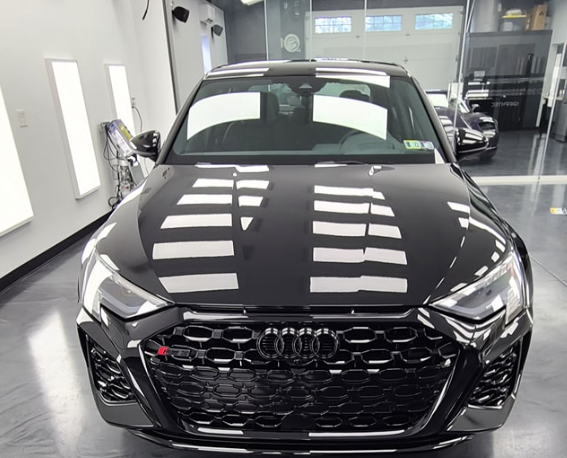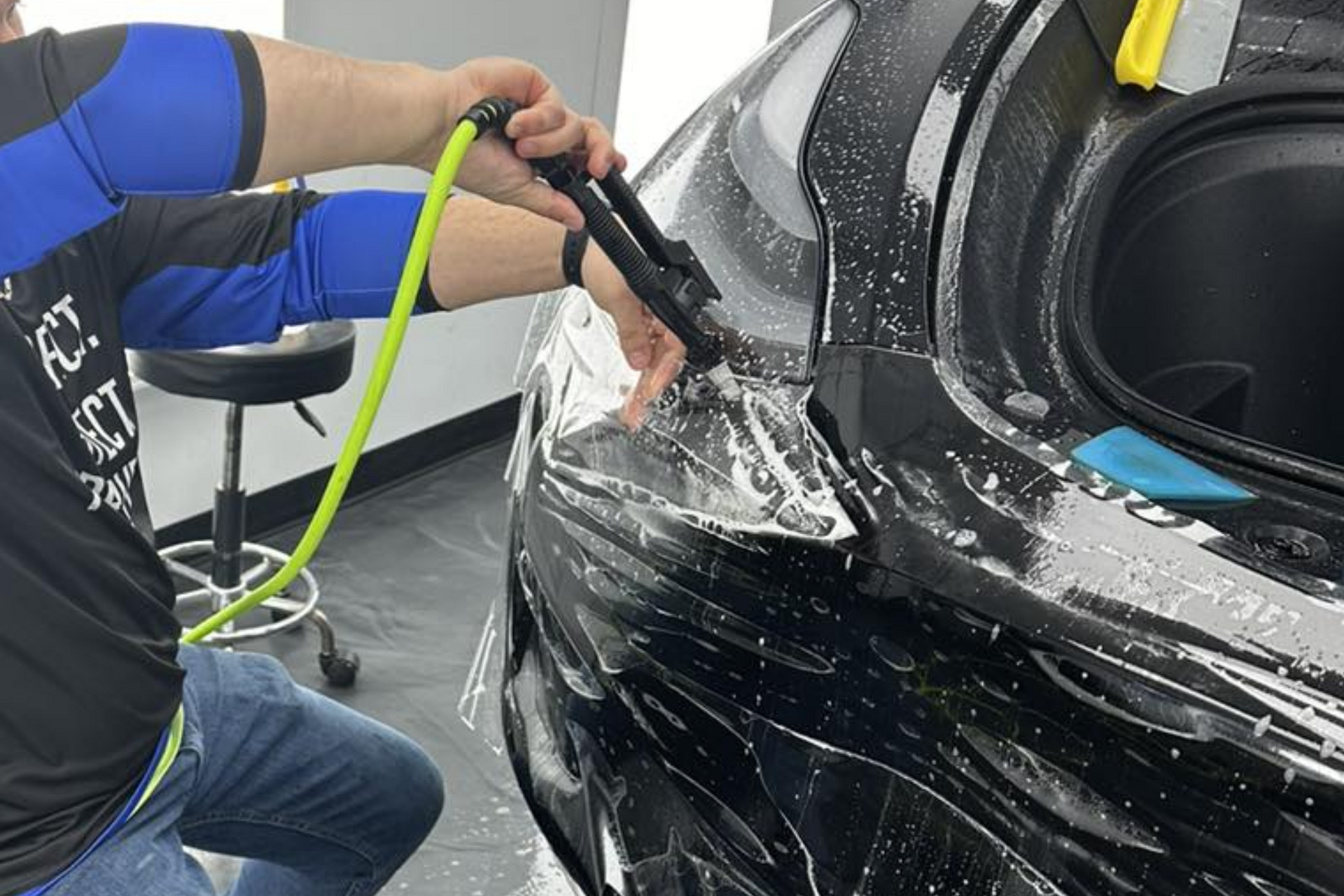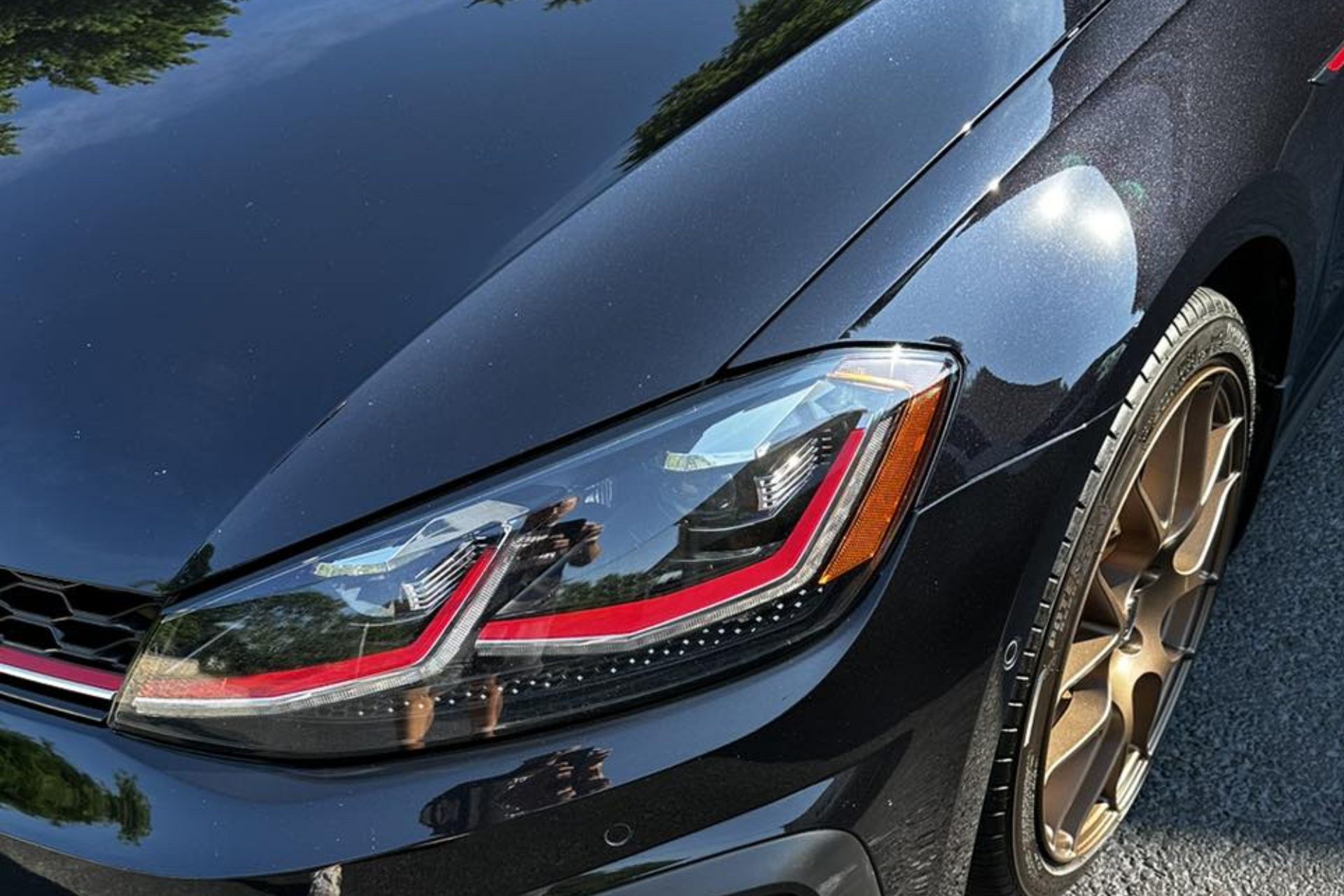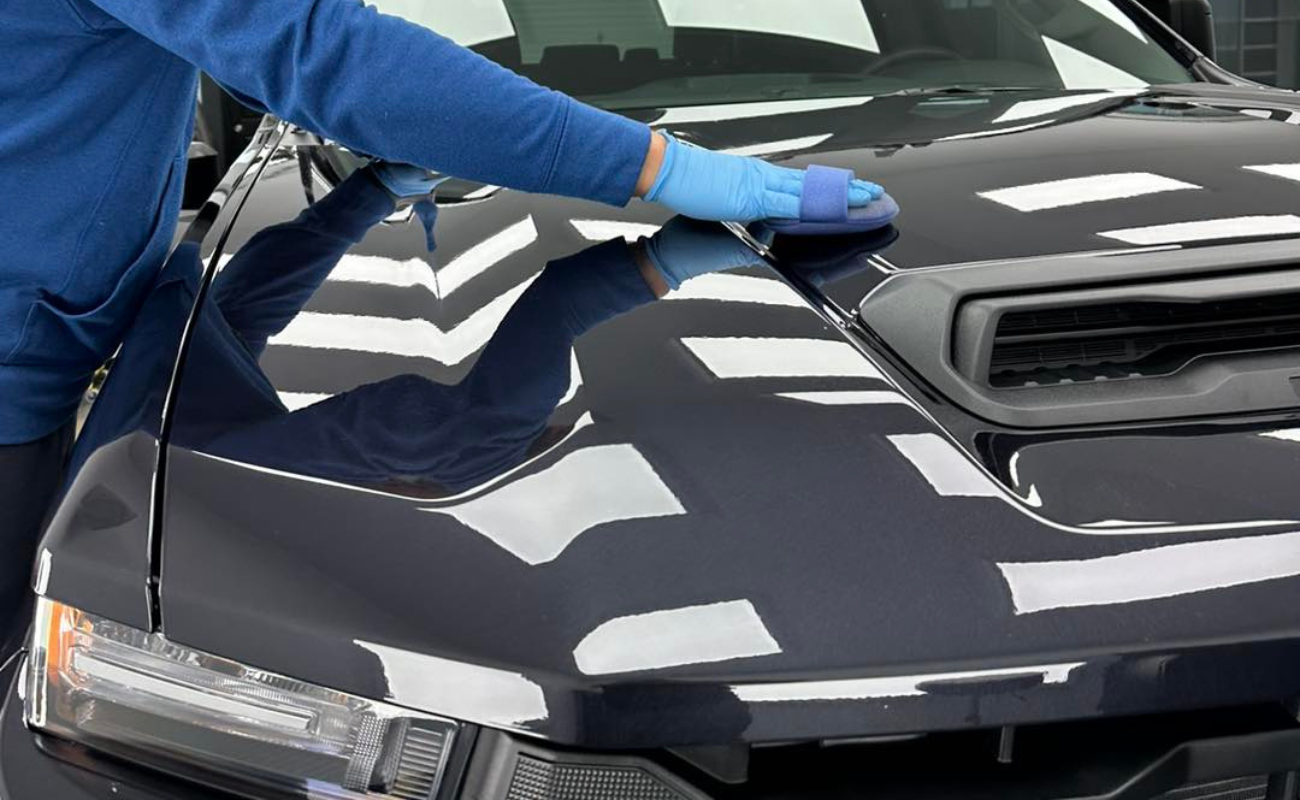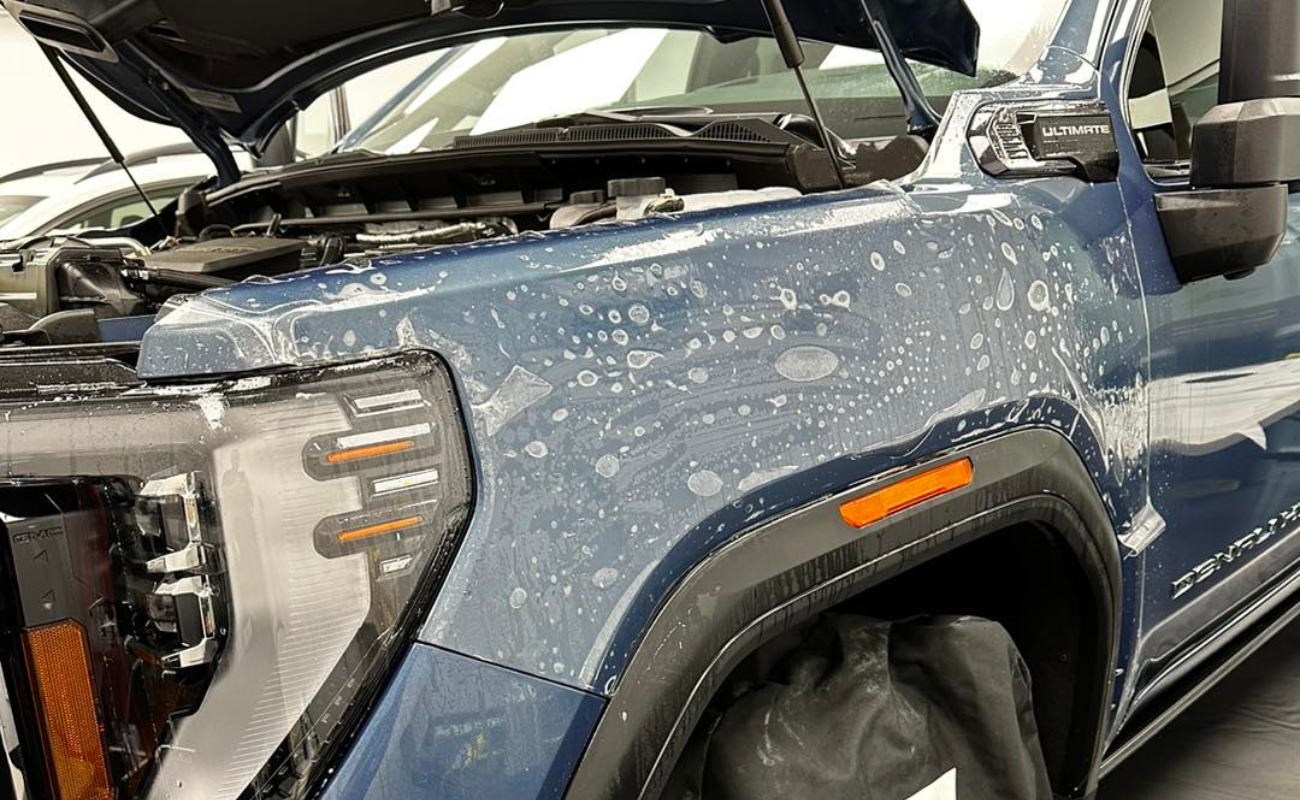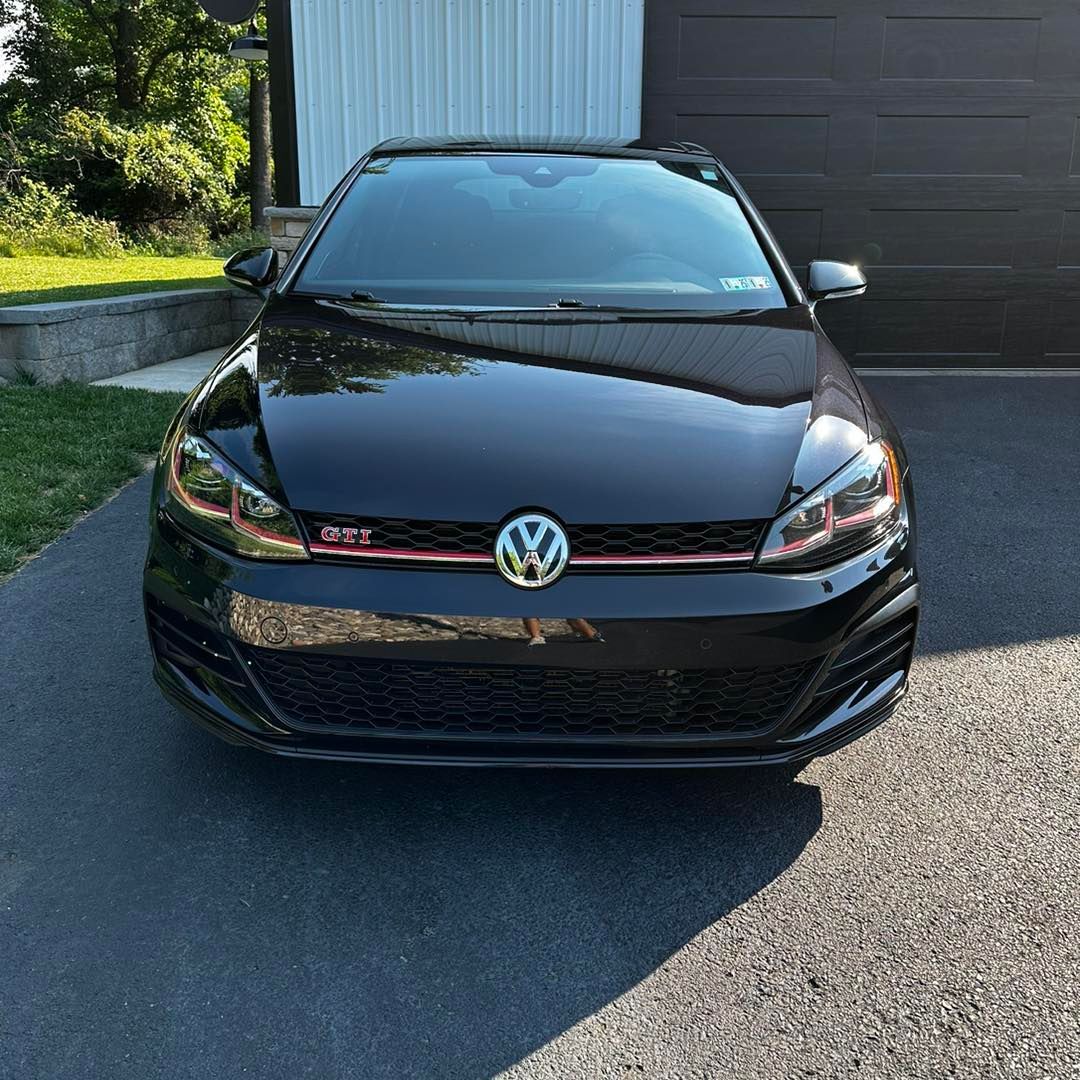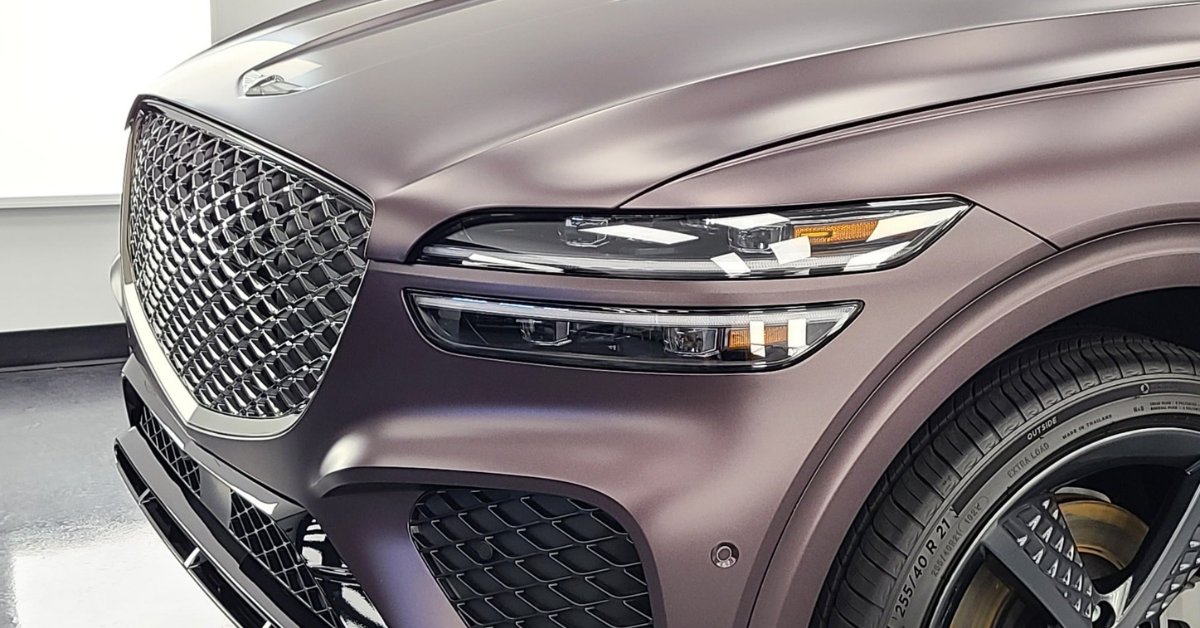Maximizing Vehicle Protection: A Step-by-Step Guide to Paint Protection Film Installation Relentless Perfection
Prepare your vehicle for ultimate protection by following these steps: Start by cleaning the surface thoroughly with automotive detergent and inspect for imperfections. Gather the necessary tools like high-quality transparent film and a heat gun for molding. Cut the film accurately matching vehicle contours and apply it carefully, using a squeegee to remove air bubbles. Trim excess film precisely for a seamless fit. Care for the film with pH-neutral soap and avoid harsh chemicals. Keep in mind that maintenance is crucial – rinse with water, wash gently, and dry thoroughly. Troubleshoot for issues like air bubbles and discoloration to guarantee long-lasting protection.
Key Takeaways
- Thoroughly clean and prep the surface for optimal adhesion.
- Use high-quality film and precise cutting for a perfect fit.
- Apply film with care, smoothing out air bubbles and wrinkles.
- Trim excess film meticulously for a seamless finish.
- Maintain the film with proper cleaning and care for longevity.
Surface Preparation
Before applying the vehicle paint protection film, thoroughly cleaning the surface is essential to ensure proper adhesion and longevity of the film. Start by washing the entire surface with a mild automotive detergent to remove any dirt, grease, or wax. Rinse thoroughly with clean water and dry the surface completely using a microfiber cloth to make sure no water spots are left behind.
After the surface is clean and dry, inspect it carefully for any imperfections such as scratches, dents, or paint damage. It’s important to address these issues before proceeding with the paint protection film installation. Use a paint-safe polish or compound to smooth out any imperfections and ensure a seamless finish once the film is applied.
Next, use a prep solvent or alcohol-based solution to clean the surface further and remove any remaining contaminants. This step is vital as it helps to eliminate any leftover residue and ensures a completely clean surface for the film to adhere to. Be thorough in this process, paying close attention to edges and corners where dirt and grime tend to accumulate.
Once the surface is impeccably clean and free of imperfections, it’s now ready for the application of the paint protection film. Taking the time to prepare the surface properly will result in a flawless finish and maximum protection for your vehicle’s paint.
Tools and Materials Needed
To proceed with the installation of the vehicle paint protection film, make sure you have the necessary tools and materials at your disposal for a successful application process. Here are the essential items you’ll need:
- Paint Protection Film: Choose high-quality transparent film specifically designed for automotive use to guarantee maximum protection.
- Squeegee: A vital, flexible squeegee is important for smoothing out the film and removing air bubbles during installation.
- Spray Bottle with a Mild Soap Solution: This will help you position the film correctly before it adheres to the surface. A mixture of water and a small amount of mild soap works well.
- Microfiber Cloth: Use a clean microfiber cloth to wipe the surface of the vehicle before applying the film to ensure no debris or dust could affect the adherence.
- Heat Gun or Hair Dryer: A heat gun or hair dryer will be needed to help mold the film to the contours of the vehicle for a seamless finish.
Having these tools and materials ready before starting the paint protection film installation process will make the job smoother and more efficient. Make sure to prepare your workspace adequately and follow the manufacturer’s instructions for the best results.
Cutting the Film
When cutting the film for installation, make sure accurate measurements are taken to match the contours of the vehicle’s surface precisely. Before cutting, make certain the film is clean and free of any debris that could impact the cutting process. Using a sharp blade is essential to achieve clean and precise cuts. A utility knife or a specialized film-cutting tool can be used for this purpose.
Begin by laying the film over the area it will cover on the vehicle. Gently smooth out any wrinkles or bubbles to guarantee a flat surface for cutting. Carefully trace the outline of the area onto the film using a soft pencil or a washable marker. This outline will serve as a guide for cutting the film to the correct size and shape.
When cutting the film, follow the traced outline closely to avoid any deviations. Take your time and use steady, even pressure to ensure a smooth and accurate cut. It’s vital to be patient during this process to prevent any mistakes that could impact the final result.
After cutting the film to size, double-check the fit on the vehicle’s surface before proceeding to the next step of installation. Proper cutting is crucial to ensuring the film provides maximum protection and a seamless appearance on your vehicle.
Applying the Film to the Vehicle
Wondering how to achieve a flawless application of the paint protection film on your vehicle’s surface? Applying the film correctly is important to ensure maximum protection. Follow these steps for a professional finish:
- Clean the Surface: Thoroughly wash the vehicle to remove any dirt, grease, or wax that could impact the adhesion of the film.
- Prepare the Area: Park the vehicle in a dust-free environment with moderate temperature to prevent dust particles from getting trapped under the film.
- Spray the Surface: Use a mixture of distilled water and a few drops of baby shampoo as a lubricant to prevent the film from sticking during installation.
- Position the Film: Carefully align the film with the vehicle’s contours, ensuring it covers the desired area without stretching or overhanging.
- Squeegee Technique: Begin from the center and work your way outwards, using a squeegee to remove any air bubbles or wrinkles for a smooth finish.
Removing Air Bubbles
If you notice air bubbles forming during the application of the paint protection film, follow these steps to effectively eliminate them and ensure a smooth finish on your vehicle’s surface.
Air bubbles can sometimes appear during the installation of paint protection film, but don’t worry; they can be easily dealt with. To eliminate these pesky air bubbles, start by using a heat gun or a hairdryer on a low setting. Gently heat the area where the air bubble is located, being careful not to overheat the film. The heat will make the film more pliable, allowing you to smooth out the bubble with your fingers or a squeegee.
As you work the air bubble out towards the edges, continue applying heat and pressure until the film is flat against the surface of your vehicle. Take your time and work methodically to ensure a seamless finish. If the bubble is stubborn and doesn’t seem to go away with heat and pressure, you can also use a small pin to puncture the bubble carefully. Once punctured, apply pressure to the area to smooth out the film.
Trimming the Excess Film
For a precise fit and professional appearance, meticulously trim the excess paint protection film using a sharp utility knife or precision cutting tool. This step is essential in ensuring that your vehicle’s paint protection film looks seamless and provides excellent coverage. Follow these detailed steps to trim the excess film effectively:
- Start from the Edges: Begin by trimming the excess film from the edges of the vehicle panels. This will help create a clean line and ensure a tidy finish.
- Use Smooth, Even Strokes: When cutting the film, use smooth and even strokes to prevent jagged edges or uneven cuts. This technique will help maintain the integrity of the film.
- Work in Small Sections: Trim the film in small sections rather than trying to cut large areas at once. This approach allows for better control and precision.
- Check for Overlaps: Make sure to check for any overlaps in the film and trim them accordingly. Overlaps can lead to peeling or lifting of the film over time.
- Inspect and Adjust: After trimming, inspect the edges to ensure they’re smooth and uniform. Make any necessary adjustments to achieve a flawless fit.
Finishing Touches
To enhance the overall appearance and durability of the paint protection film, meticulous attention to detail in the finishing touches is essential. Once the film is properly trimmed and applied, the final steps in the installation process can truly boost the protection and aesthetics of your vehicle.
Begin by using a heat gun or infrared lamp to carefully heat the edges of the film. This heat application helps the film conform snugly to the contours of your vehicle, ensuring a seamless finish that not only looks great but also prevents dirt and moisture from seeping underneath.
Next, it’s time to focus on the edges and corners. Using a fine-grit sandpaper or a polishing compound, gently smooth out any rough edges or imperfections that may have occurred during the installation. This step is vital in preventing peeling or lifting of the film over time. Additionally, a high-quality sealant or edge sealer can be applied to further protect these vulnerable areas from environmental damage.
Caring for the Film
Proper maintenance of the paint protection film involves regular cleaning using mild soap and water to preserve its protective properties and visual appeal. When caring for the film, follow these tips to guarantee its longevity and effectiveness:
- Use a pH-neutral soap: Opt for a gentle, pH-balanced soap to clean the film without causing damage to its protective layer.
- Avoid harsh chemicals: Steer clear of abrasive cleaners, solvents, or harsh chemicals that can degrade the film over time.
- Hand wash whenever possible: Hand washing allows for a more controlled and gentle cleaning process that minimizes the risk of damaging the film.
- Pat dry with a microfiber cloth: After washing, use a soft microfiber cloth to gently pat the film dry, avoiding any abrasive rubbing motions.
- Apply a sealant or wax: Consider applying a quality sealant or wax specifically designed for paint protection films to enhance its gloss and durability.
Maintenance Tips
When maintaining the paint protection film, make sure to regularly clean using a pH-neutral soap and gentle hand washing to preserve its protective properties and visual appeal. Keeping your vehicle’s paint protection film clean is important for guaranteeing its longevity and effectiveness in safeguarding your car’s exterior.
Start by rinsing the film with water to remove any loose dirt and debris. Then, use a mild pH-neutral soap solution and a soft microfiber cloth to wash the film gently. Avoid harsh chemicals or abrasive scrubbing tools, as these can damage the film and compromise its protective abilities.
After washing, thoroughly rinse the film with clean water to remove any soap residue. It’s important to dry the film completely using a soft, clean microfiber towel to prevent water spots or streaks from forming. Regular cleaning not only maintains the film’s protective properties but also enhances its visual appeal, keeping your vehicle looking sleek and well-maintained.
Additionally, consider using a dedicated paint protection film spray or sealant to further protect and enhance the film’s performance. These products can help maintain the film’s clarity, prevent yellowing or discoloration, and provide an additional layer of protection against environmental elements.
Troubleshooting
For effective troubleshooting of your vehicle’s paint protection film, start by closely inspecting the film for any signs of peeling or lifting at the edges. This can indicate weak adhesion or improper installation.
Here are some detailed steps to help you troubleshoot any issues with your paint protection film:
- Check for Air Bubbles: Inspect the film for any air bubbles trapped underneath. These can distort the appearance of the film and may indicate improper installation.
- Inspect for Contaminants: Look for any dirt, dust, or debris that might’ve gotten trapped between the film and the vehicle’s surface. These contaminants can cause the film to lift or peel over time.
- Evaluate Edge Adhesion: Pay close attention to the edges of the film. If you notice any lifting or peeling, gently press them back into place using a soft microfiber cloth.
- Assess for Discoloration: Check for any discoloration or yellowing of the film, which could be a sign of sun damage or poor-quality film.
- Monitor for Scratches: Keep an eye out for any scratches or abrasions on the film’s surface. While paint protection film is durable, deep scratches may require professional repair to maintain the best protection.
Final Thoughts
By adhering to these detailed guidelines for installing paint protection film on your vehicle, you can ensure optimal protection against scratches, chips, and other forms of damage. Remember to care for the film appropriately and regularly upkeep it to extend its effectiveness.
By dedicating the time to installing and upkeep paint protection film, you’re investing in the long-term protection and preservation of your vehicle’s appearance.
Check out our other Services;
Ceramic Coating, Vinyl Wraps, and
more.
ABOUT Relentless Perfection
Premium Detailing
Specializing in premium vehicle detailing since 2015, Relentless Perfection delivers tailored solutions for daily drivers, luxury sedans, pick-up trucks, EVs, and high-performance track vehicles. Located in Langhorne, Pennsylvania, our high-end services include professional-grade ceramic coatings, vinyl wraps, paint protection film, and more. With a custom-built facility and customer-focused approach, we ensure that every vehicle through our doors receives unparalleled care, quality, and precision. No matter what type of vehicle you call your own, trust Bucks County’s #1 detailing experts to keep it in great shape!
BUSINESS INFO
Contact US
Phone: 267-576-9489
Email: info@relentlessperfection.com
Hours
Monday - Friday: 8:00 AM - 4:00 PM,
By Appointment Only
Saturday - Sunday: Closed
QUICK LINKS
Designed by the team at
Detailers Roadmap, a platform developed for detailing operators across the globe.
All Rights Reserved | 8bitcreative, LLC | Relentless Perfection
